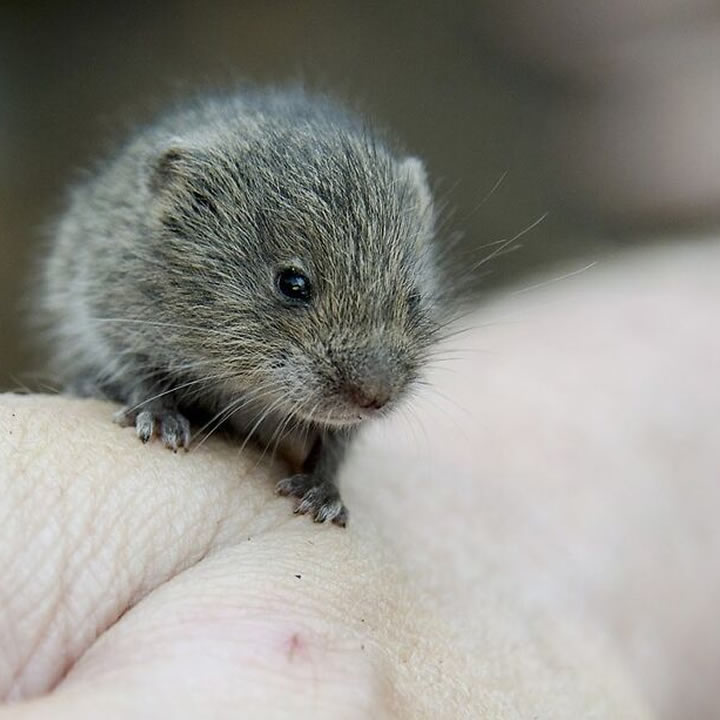When you discover any kind of intrusive wildlife having a party in your backyard, the first thought that springs to mind will be – get this thing out of here! It probably won’t be “wait a minute, is that a mole or a vole?”.
And yet, knowing the difference can be important when you reach out to wildlife control for mole removal. No matter what kind of wildlife pest you’re dealing with, it’s time to call Metro Wildlife Control to get them out!
First of all, it’s important for you, so that you can search for a wildlife removal company that handles what you need. It’s also important for the wildlife removal company, obviously, because they need to know the job they’ll be doing.
That being said, this article focuses on highlighting the key differences between moles and voles, two animals that have long been mistaken for the other.
Aside from their notorious habit of digging tunnels underground, the two animals are really quite different. Oh, and they both like to cause serious damage to your lawn. But that’s pretty much where the similarities end.
Moles and voles are not even the same species
You’d be forgiven for assuming moles and voles are part of the same species, at least, except that’s not quite right, either. Voles belong to the Cricetidae family, and more specifically, to the Mammalia class, and the Rodentia order.
Closely related to hamsters and lemmings, voles are another type of rodent. And you can even see it if you look at one (although good luck catching one above ground for long enough, in the day!).
But what about moles? Moles belong to the Talpidae family and are classified as Mammalia of the Eulipotyphla order. As the name suggests, moles are mammals, while voles are not.
Now, to you, this might not seem like such a huge difference, but this distinction leads to other differences in the way these two intruders live, feed, and conduct themselves. Speaking of which…
Moles and voles have different diets
Voles eat solely plants and are sworn herbivores. This means they may dig up your yard, flower beds, and pretty much your entire yard, in search of their leafy greens (well, anything green, really).
Moles, on the other hand, are predators, and their diet consists largely of tiny victims. Moles will be out there, digging for worms, grubs, and all sorts of insects that they can crunch up for breakfast.
Now, in some cases, this can actually end up being beneficial for your yard, as moles might be feeding on pest insects. Though more often than not, they’ll also dig up your entire yard in the process, which causes more mess than it’s worth.
If you’re wondering how to trap a vole or a mole and get it far away from your property right now, you’re not wrong.
But read on, it gets even better.
They dig differently, too
After all, this is probably the most important difference to be aware of, since the animal’s digging pattern may alert you to whether you’ve got moles or voles digging up your yard. Well, this is determined by what they like to do underground.
Moles are notorious for their obnoxious burrowing habits.
They will burrow in the ground for food (grubs, insects, etc.), and leave behind a ton of raised mounds of dirt. So if you’re staring out across your lawn, and it’s dotted with raised mounds of earth, then chances are, you’re dealing with an angry mole (or moles).
Voles, on the other hand, do not like to burrow, and won’t engage in this type of behavior.
What they will do is decide on a single access point, and then create a maze of underground tunnels, from that starting point. So if you’re looking at a single hole in the ground that leads into a complex maze underneath the earth, chances are you’re dealing with voles.
Don’t worry, they’re both equally tricky to trap since they dwell mostly underground. This is why you need professional wildlife removal.
One of them actually lives above ground
Bet you didn’t expect that. But yes, while moles spend the vast majority of their life underground, and tend to stick around if they’ve found an area with a heavy enough supply of food. This may be really bad news for you if they decide that area’s in your backyard.
Voles, on the other hand, actually divide their time between living above and below ground. They live in low-lying vegetation and only go underground in search of bulbs, roots, and other yummies. They will actually leave trails above ground, in the snow or grass.
Bonus difference: voles reproduce a lot faster
Since voles are basically rodents, they’ll reproduce at the same rate rodents do. Meaning their family can triple in size within a few weeks. Moles, on the other hand, only reproduce once a year, with a small litter of 2-6 pups. Bet you’re wishing for moles right about now!

